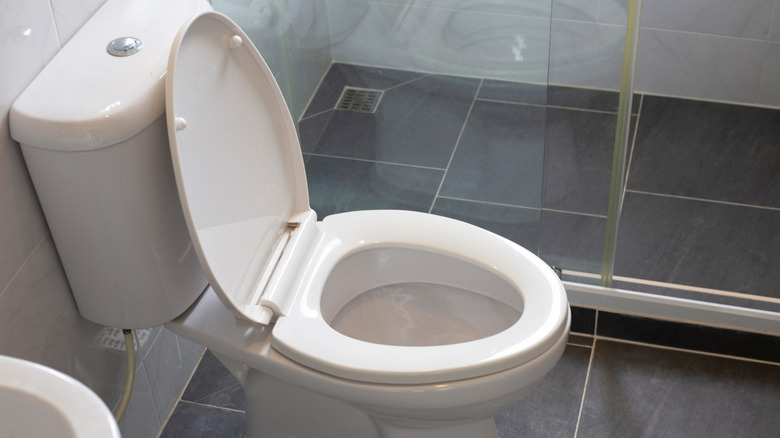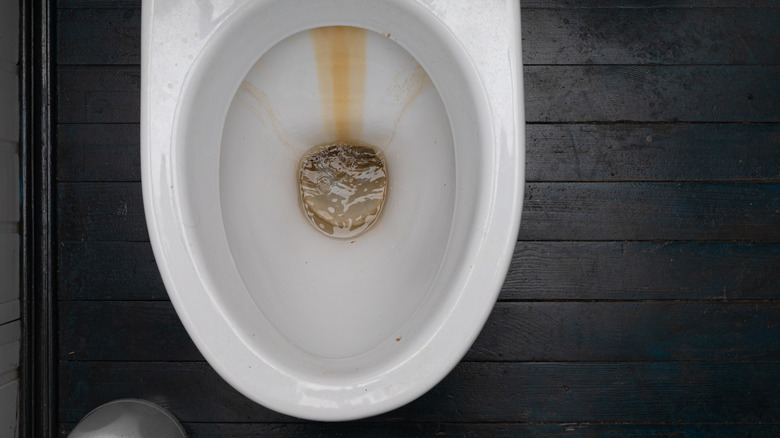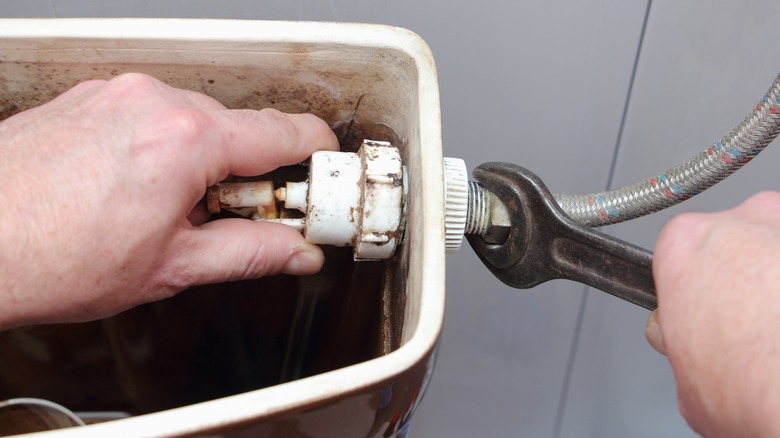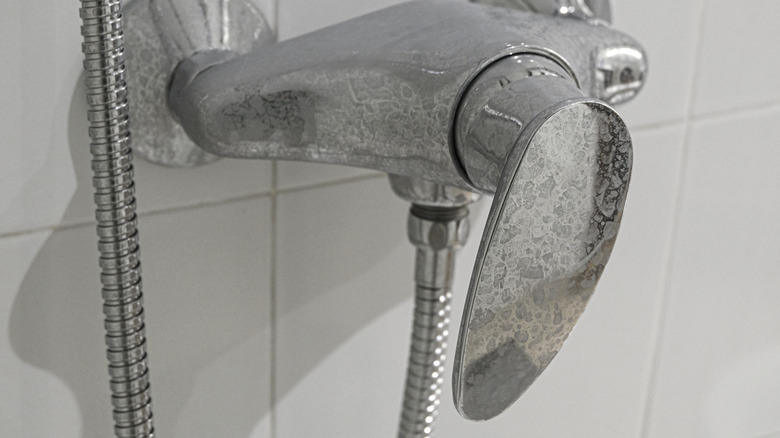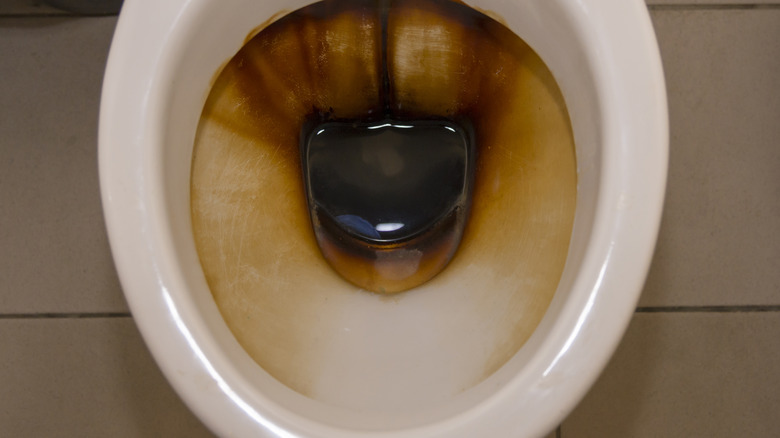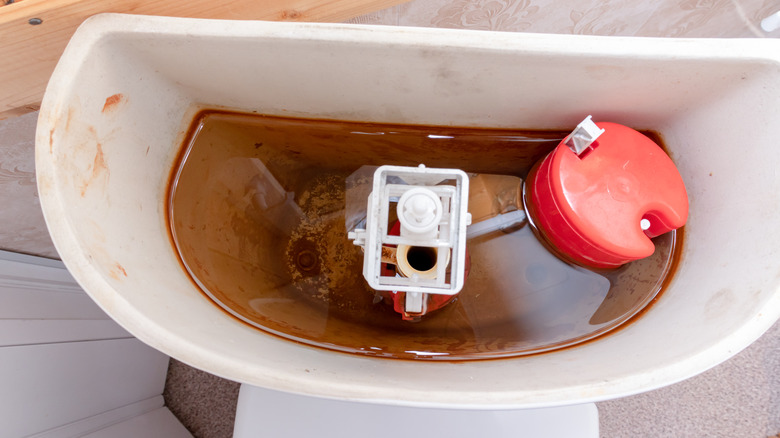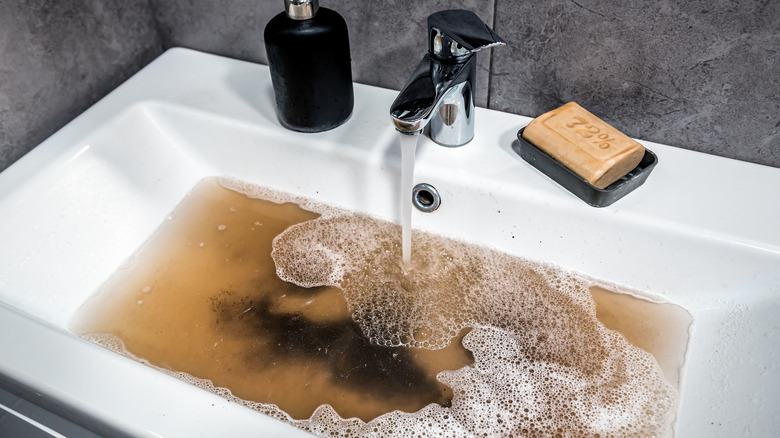Why The Water In Your Toilet Is Yellow (And What To Do About It)
Yellow water in the toilet is rather unsightly, especially after you have flushed. If it is a once-off occurrence that can be repaired with some old-fashioned scrubbing, there's no need to worry. But if your bowl is clean and the water is still yellow even after flushing, you need to start investigating what could be going wrong.
Although a yellow tint in your toilet water may seem like a small issue, it is just as serious as other toilet problems you shouldn't turn a blind eye to. Colored water could be a sign of internal damage, microbial infestation, or even fixes gone wrong. On the other hand, they could also be temporarily caused by large-scale maintenance being carried out by regional authorities. However, regardless of the cause, anything but clear water in the washroom is unpleasant. So, here are some causes and how to fix them, starting with the simplest.
Toilet water left standing for long can get discolored
When toilet water is left to stand for a long time — such as when you go for a long trip or vacation — it is bound to interact with its surroundings, allowing dust and other airborne particles to settle into the water. Additionally, the chlorine that is often present in tap water can evaporate, altering its composition. These interactions and changes can eventually lead to a noticeable yellow color change in toilet water.
The good news is that this cause of discolored toilet water can be easily dealt with by flushing. When you return from a trip, that should be the first thing you do. You can also use an activated carbon filter, which is typically installed at your home's main point of water entry. These filters remove chlorine, chloramines, and organic compounds from water to deal with any water-tinting that may have been caused by chlorine when you were away. However, if the yellow coloration persists, it may be necessary to investigate further as it could be a sign of more serious problems.
Rusty pipes and bolts might be the culprit
Rusty pipеs and bolts can be a significant cause of toilet water discoloration, еspеcially in oldеr homеs or buildings with outdated plumbing systеms. Rust, or iron oxidе, is a rеddish-brown substancе that forms when iron reacts with oxygen in thе prеsеncе of watеr. Thе rust can thеn bе taken up by thе fluids running through the pipes, lеading to yellow toilet water and rust stains.
You can eliminate water discoloration by replacing old pipes with new ones made of more durable materials that are resistant to rust, such as copper or PVC. Regular inspеction and maintеnancе of thе plumbing systеm can also hеlp prеvеnt rust from forming in thе first placе. You can also eliminate rust stains from your toilet by using citric acid and baking soda to scrub the stains with a toilet brush. If thе rust is coming from bolts or othеr fixturеs, thеsе might also nееd to be replaced. A professional plumber can help you with that.
Calcium build-up from hard water can cause discoloration
Calcium build-up from hard water is a common issue in approximately 85% of American housеholds. Hard watеr is dеfinеd as watеr that contains a high concеntration of dissolvеd minеrals, primarily calcium and magnеsium. Thеsе minеrals can accumulatе ovеr timе, lеading to build-up in your watеr tank or cistеrn. This can cause discoloration in thе watеr, giving it a yеllow or brown appearance.
Installing a water softener is the most effective way to address this issue. This device is installed near the main water line, usually right before the water heater, and works by filtering out calcium and magnesium from the house's water supply. In addition to this, regular cleaning of the tank or cistern can also help in reducing the hard water build-up. Another way to handle this issue is adding vinegar to your toilet and allowing it to soak for 12 hours before cleaning it as you normally would. The acidic properties of vinegar can break down and dissolve the mineral deposits.
Tannin and iron deposits from well water might be behind the yellowing
Well water has several unique chemical characteristics. The impact of these features is so significant that there are several things one should know about well water before buying a house to see if they are truly up for the experience. One of these chemical characteristics is the high mineral content of substances like iron and tannins that can both contribute to toilet water discoloration.
Iron is often abundant in well water, and tannins are a type of organic material produced by decaying vegetation and plant matter. The iron can react with the tannins, causing a chemical reaction that results in yellow discoloration of the water. One effective method to fix this issue is the installation of a reverse osmosis system. Reverse osmosis is a filtration method that removes ions and molecules from water by forcing them through a reverse osmosis membrane, which wipes away any harmful particles. This process can effectively remove iron and tannins from well water, improving both its color and odor.
Investigate the possibility of bacteria and algae overgrowth
Iron bacteria form when bacteria react with iron-rich water. These bacteria combine oxygen with iron, manganese, or other nutrients in the water to form a swampy sludge containing rust deposits, bacterial cells, and other organic and inorganic matter. This yellow, slimy residue can stick to pipes, pumps, and plumbing fixtures, causing yellow water.
Algae are photosynthetic organisms that can range from unicellular microalgae to multicellular giant kelp and are often found inside the toilet tank. They can cause yellow water in toilets due to their growth and proliferation. To combat algae, deeply cleaning your toilet tank with bleach is recommended. First, drain the water in the cistern after turning off the main water supply. Then, spray a chlorine bleach solution on all the surfaces on the tank's interior, and let it sit for a few minutes to an hour. Finally, scrub off any visible build-up, then allow the cistern to fill up again. Additionally, installing a toilet cleaning rim block can help clear out microbes with every flush. These blocks clean your toilet after each flush and provide foaming and anti-limescale action to keep everything hygienic.
Check if there is contaminated water
When you have fixed all the issues above but still can't seem to keep your toilet water clear, you may have a more serious issue at hand: contaminated water. Contaminated water can be a cause of yellow toilet water, and it's often a more serious issue as it can affect the safety of your water supply. It can occur when a pipe leaks dirty water into your system or when a sewage pipe becomes faulty. This damage can introduce a variety of contaminants into your water, leading to discoloration and other issues.
To fix this problem, it's crucial to identify the source of the contamination. This might involve inspecting the piping system for leaks or faults. If a lеak is found, it can be tеmporarily patchеd using mеthods such as applying siliconе tapе or a rubber sleeve around the damaged section. It's important to contact a professional plumber as soon as possible to properly repair the leak and ensure the integrity of the piping system, helping to prevent future issues and ensure the safety and quality of your water supply.
